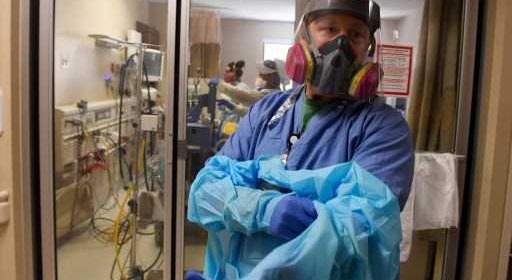Colorado’s COVID hospitalizations and deaths back at March levels

Colorado’s COVID-19 hospitalizations and deaths have reached levels last seen in early March, and it’s not clear when they might start to fall.
Hospitalizations rose by about 20% over the last week, from 270 on June 7 to 323 on Tuesday. About 89% of beds in intensive-care units and 91% of general hospital beds were full as of Tuesday, though most were used by people hospitalized for something other than COVID-19.
It’s likely the number of recorded hospitalizations would be higher if facilities were still testing every patient who came in, as they did at this time last year, said Beth Carlton, an associate professor of environmental and occupational health at the Colorado School of Public Health.
While they’re still capturing people hospitalized primarily because of the virus, they may be missing people who previously would have been identified as patients with the virus and those in the “gray zone” where an infection may have aggravated an underlying condition, she said.
Deaths also have started to rise, with 46 reported in the first week of June. That’s the highest weekly total since early March, and may increase as delayed reports come in.
The Colorado Department of Public Health and Environment reported 16,566 new cases in the week ending Sunday, which was a 14% increase from the previous week. Cases appeared to be slightly lower in the first days of this week, but it’s not clear if that’s a true decrease or the result of a backlog.
The percentage of tests coming back positive has dropped compared to the previous week, to an average of 11.9% over the last seven days. Generally, anything above 5% raises concerns about missed cases.
A shift to relying on at-home tests has pushed down case counts, since many people don’t know they can report their tests, and others choose not to or give up partway through the process. Home testing may also slightly raise the positivity rate, since almost no one reports their negative results.
Colorado’s COVID-19 outbreaks rose again, from 544 a week earlier to 557 on Wednesday. Declines in school outbreaks partially offset increases in nursing homes, assisted living facilities, correctional facilities and child care centers.
It’s not quite clear which way the numbers are heading, but for now, the virus remains widespread in Colorado, Carlton said. People should wear masks in indoor public places, especially in the Denver area and others identified as having especially high transmission, she said.
“All information points to high levels of infection,” she said.
As of Wednesday morning, the Centers for Disease Control and Prevention considered 14 counties in Colorado to be at the high risk level: Adams, Arapahoe, Boulder, Broomfield, Denver, Douglas, Jefferson, La Plata, Mesa, Ouray, Pitkin, Rio Blanco, San Juan and San Miguel.
Those counties had at least 200 cases for every 100,000 people in the last week and either had at least 10 new hospitalizations per 100,000 people over last week or reported 10% of their hospital beds were used by COVID-19 patients.
About 10% of counties nationwide are at the high risk level, according to the CDC. Overall, cases and hospitalizations have plateaued in recent days, with decreases in the Northeast offsetting increases in the South and West.
There is some cause for hope that Colorado’s trajectory could peak soon, based on how the virus has behaved in East Coast states that saw a surge earlier this spring, Carlton said. That’s not a sure thing, however, because those states were primarily dealing with the BA.2.12.1 variant, while BA.4 and BA.5 are gaining ground in Colorado, she said.
As of the last week of May, BA.2.12.1 accounted for about 60% of the samples sequenced in Colorado, which was a decrease from 66% the previous week. BA.4 and BA.5 made up a combined 16% of samples, up from 10%.
It appears BA.4 and BA.5 are somewhat better at evading the immune system than previous versions of omicron, but how much better remains unclear, Carlton said. Still, given the high level of spread in the community and the potential to get the virus again shortly after recovering, it’s a good idea make sure you’re up-to-date on boosters and to take other precautions, she said.
“The more layers of protection people can add, the less likely they are to have their lives disrupted by COVID-19,” she said.
Subscribe to bi-weekly newsletter to get health news sent straight to your inbox.
Subscribe to bi-weekly newsletter to get health news sent straight to your inbox.
Source: Read Full Article